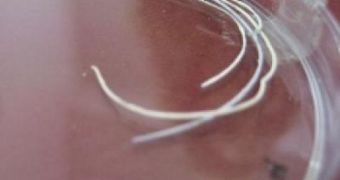Experts at the Tel Aviv University (TAU) Department of Biomedical Engineering recently announced the development of a new type of wound dressing, designed primarily to benefit severe burn-trauma victims. In spite of the doctors' best efforts, a large number of people – nearly 70 percent of all patients – who are committed to the hospital following this type of accidents die because of infections to their wounds. The new dressing was designed as a way of preventing that, and scientists who collaborated on the project say that the number of deaths is considerably reduced with the new method.
Details of the TAU team's latest achievement are published in a recent issue of the respected scientific Journal of Biomedical Materials Research – Applied Biomaterials. In the paper, the scientists explain that the dressings are based on a revolutionary, new type of fibers that have been engineered in the lab of Professor Meital Zilberman. The fibers can be laden with drugs (such as antibiotics), which speed the healing process, but they can also be absorbed inside the body once the process is complete. It only takes two days for the new dressing to eliminate all infection-triggering bacteria, the team reports.
“We've developed the first wound dressing that both releases antibiotic drugs and biodegrades in a controlled manner. It solves current mechanical and physical limitations in wound-dressing techniques and gives physicians a new and more effective platform for treating burns and bedsores,” Professor Zilberman explains. “Wound dressings must maintain a certain level of moisture while acting as a shield. Like skin, they must also enable fluids from the wound to leave the infected tissue at a certain rate. It can't be too fast or too slow. If too fast, the wound will dry out and it won't heal properly. If too slow, there's a real risk of increased contamination,” she adds.
“People who suffer from large burns don't usually die from the condition itself. The fatal culprits are the secondary bacterial infections that invade the body through these vulnerable burned areas,” the expert shares, underlying the importance of bacteria being destroyed even before they enter the body. Most people who die because of their burns do not die from the conditions themselves, but from secondary bacterial infections. “When administered at the wound, a doctor can give relatively high but local doses of antibiotics, avoiding any toxicity issues that arise when the same amount of antibiotic passes through the body,” Zilberman adds.

 14 DAY TRIAL //
14 DAY TRIAL //